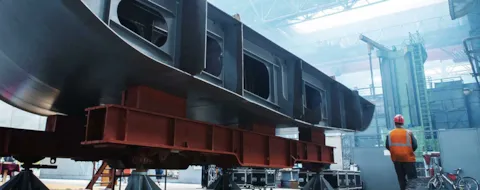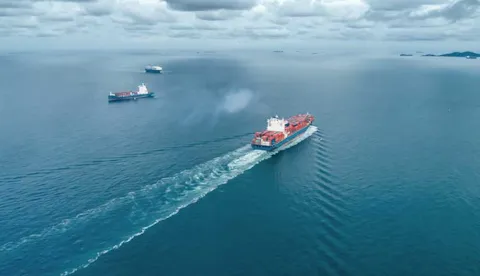NEWBUILDINGS
What are the key considerations for newbuilding to stay competitive and compliant over the long term?
What are the key considerations for newbuilding to stay competitive and compliant over the long term?
The often-significant gap between ordering and delivery means shipowners are forced to make investment decisions without knowing how conditions might change while the vessel is under construction. Making the right choices at the start can help not only to achieve compliance but help access green financing products, with more favourable terms, and can ensure increased competitiveness.
There are a broad range of systems available today to help owners reduce fuel consumption and corresponding emissions that owners should consider when ordering a vessel. While many of the examples below can make a difference on their own, owners should also consider how different systems may work together.
Below are some of the key technologies and choices for newbuildings.
Ship design
In anticipation of wider availability of low emissions alternative fuels, owners are encouraged to design vessels to accommodate emerging fuel types. For example, vessels can be equipped with multifuel engines, specialised tanks and related hardware to enable a seamless switch from FO to ammonia. In addition, the introduction of innovative hull designs, which improve hydrodynamics to reduce drag, should be explored.
Hull coatings/Air lubrication
Using compressed air evenly distributed along a ship’s hull, owners can reduce the friction between the ship’s hull and seawater creating energy-saving effects. Also, advanced hull coatings and new technologies, such as remotely operated robotic hull cleaning systems, can significantly improve hull performance.
Wake-equalizing ducts
A wake equalizing duct is a ship hull appendage mounted in the inflow region of a screw propeller, increasing efficiency, thus reducing fuel consumption and GHG emissions.
Waste heat recovery systems
Systems developed specifically for marine use have been developed to take waste heat from the engines to heat the vessel and/or generate clean electricity, thus reducing emissions.
Electrification
While batteries do not yet generate enough power for deep sea shipping, they can be used for onboard supplementary or auxiliary power, thus reducing emissions. Electricity can also be generated from installed solar panels to power some onboard systems.
Wind assisted propulsion
Advances in aerodynamics in combination with computer technology has produced a number of exciting wind-assisted technologies that can cut fuel consumption by up to 30%.
Operations
Slow steaming
A vessel’s fuel consumption for propulsion is a function of the energy needed to push a vessel through water at a given speed. The faster the vessel travels, the more fuel is required, and the more emissions are produced. By maintaining a constant, slower speed, vessels can both reduce fuels costs and corresponding emissions.
Voyage optimisation
Because more fuel is required to navigate strong currents, wave forces and high winds, voyage planning can impact fuel consumption. By leveraging real-time information on currents and weather data, owners can choose the best possible routes to avoid suboptimal conditions, thus reducing emissions.
Trim optimization
For certain vessel types, trim optimisation, or how the disposition of cargo impacts hull hydrodynamics, can reduce emissions and fuel consumption by up to six per cent.
Fuel choice
Fuel choice will be determined by ship type, operational profile, fuel availability and owner preferences and business strategy. Short sea vessels and ferries operating on fixed routes may opt for low or zero emission fuels (hydrogen, methanol, electricity) if there is supply in place locally.
While for the deep-sea trades, LNG and LPG are currently the most widely used alternatives, although some owners are evaluating the viability of green methanol and ammonia. In addition, drop in fuels (e.g. biofuels), could be used as a substitute for FO to lower emissions.

